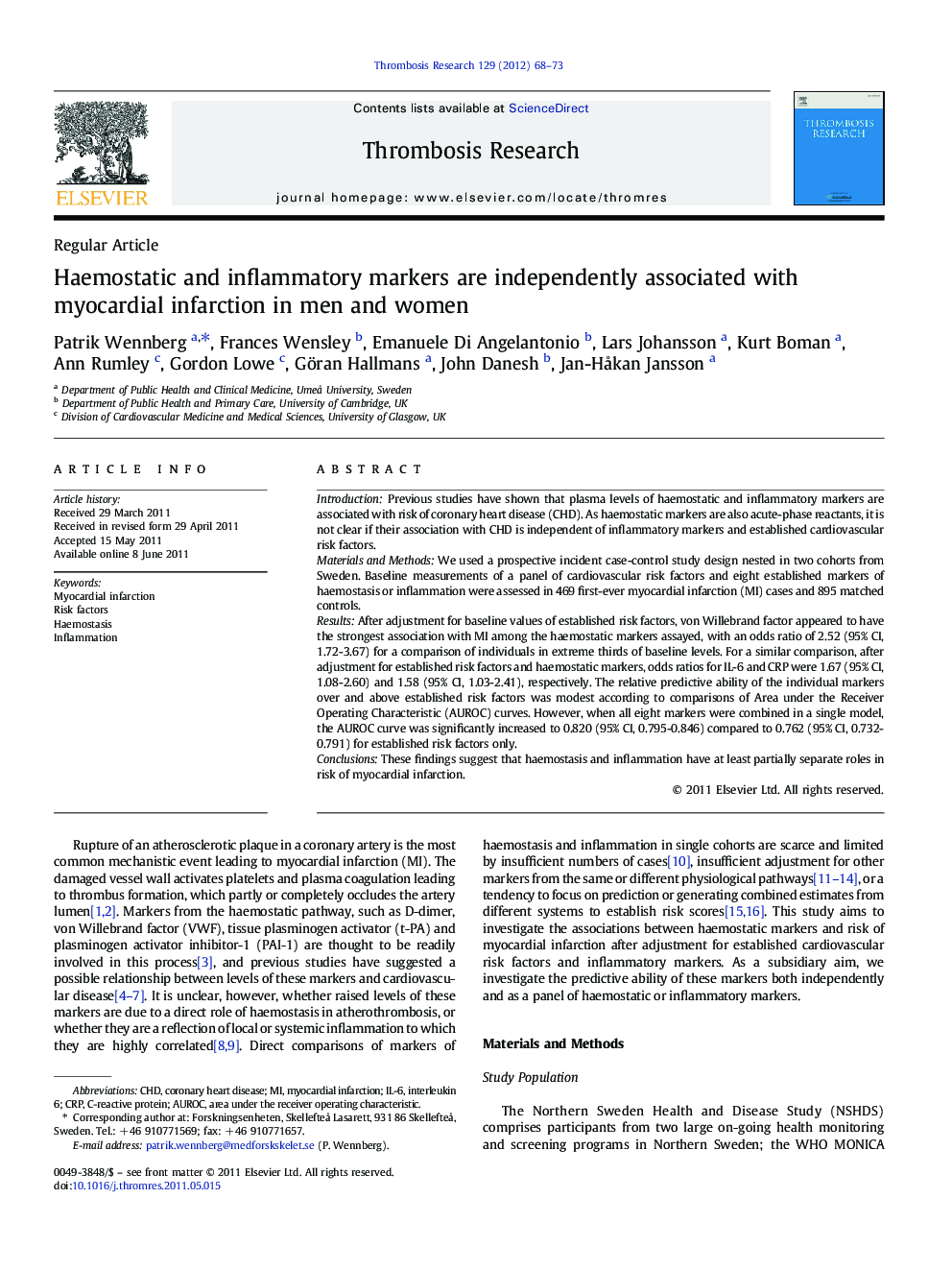| Article ID | Journal | Published Year | Pages | File Type |
|---|---|---|---|---|
| 3029005 | Thrombosis Research | 2012 | 6 Pages |
IntroductionPrevious studies have shown that plasma levels of haemostatic and inflammatory markers are associated with risk of coronary heart disease (CHD). As haemostatic markers are also acute-phase reactants, it is not clear if their association with CHD is independent of inflammatory markers and established cardiovascular risk factors.Materials and MethodsWe used a prospective incident case-control study design nested in two cohorts from Sweden. Baseline measurements of a panel of cardiovascular risk factors and eight established markers of haemostasis or inflammation were assessed in 469 first-ever myocardial infarction (MI) cases and 895 matched controls.ResultsAfter adjustment for baseline values of established risk factors, von Willebrand factor appeared to have the strongest association with MI among the haemostatic markers assayed, with an odds ratio of 2.52 (95% CI, 1.72-3.67) for a comparison of individuals in extreme thirds of baseline levels. For a similar comparison, after adjustment for established risk factors and haemostatic markers, odds ratios for IL-6 and CRP were 1.67 (95% CI, 1.08-2.60) and 1.58 (95% CI, 1.03-2.41), respectively. The relative predictive ability of the individual markers over and above established risk factors was modest according to comparisons of Area under the Receiver Operating Characteristic (AUROC) curves. However, when all eight markers were combined in a single model, the AUROC curve was significantly increased to 0.820 (95% CI, 0.795-0.846) compared to 0.762 (95% CI, 0.732-0.791) for established risk factors only.ConclusionsThese findings suggest that haemostasis and inflammation have at least partially separate roles in risk of myocardial infarction.
